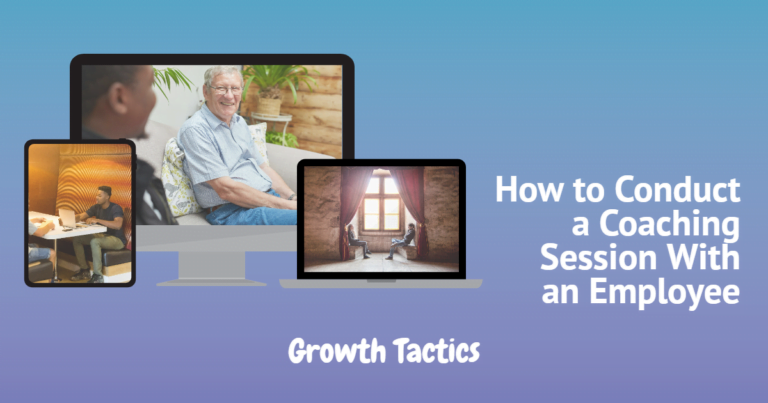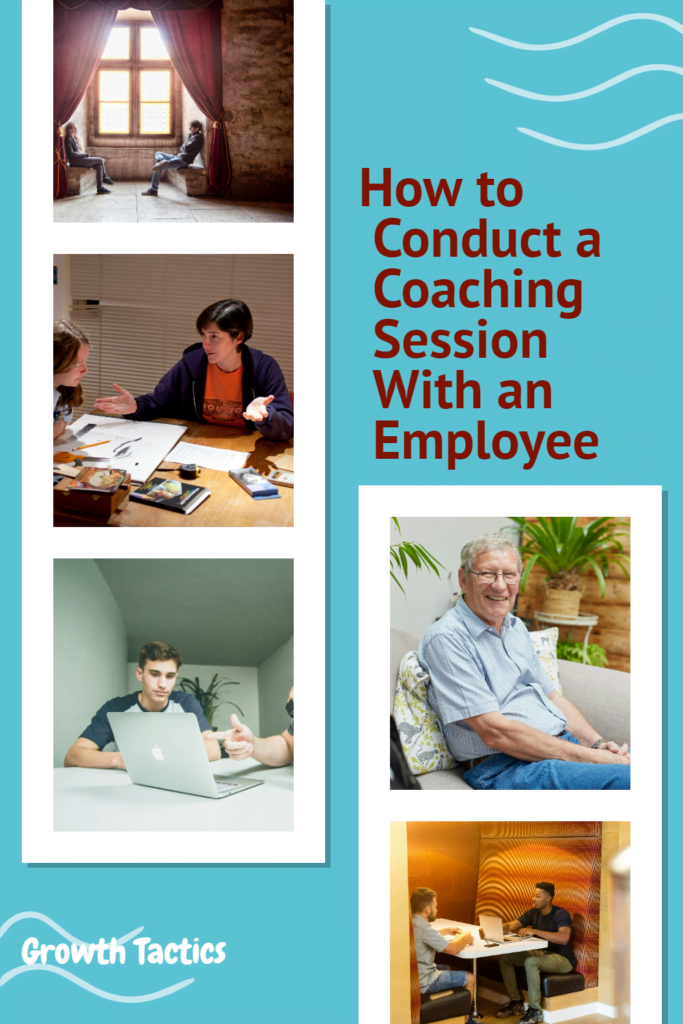Coaching is an integral part of employee development and organizational growth. Conducting an effective coaching session requires forethought, skill, and a genuine commitment to helping your team members succeed. In this blog post, we’ll explore how to conduct a coaching session with an employee that can empower your employees to improve and excel.
Jump To Section
Creating a Welcoming Coaching Environment
Before diving into a coaching conversation, it’s important to create a comfortable environment that fosters open communication. An effective coach understands the impact of the setting on the employee experience. Ensure the space is private and free from interruptions, signaling to your employee that this coaching session is a priority.
The Importance of Privacy and Comfort
When employees feel that their conversation is private and in a comfortable setting, they’re more likely to open up and discuss candidly the areas they need to improve. A good coach always starts by establishing trust, and a physical environment conducive to sharing and honesty is a crucial part of this process.
Building Trust from the Get-Go
Trust is the foundation of any successful coaching relationship. From the beginning, demonstrate empathy and a genuine interest in the team member’s well-being and career development. This encourages employees to engage more actively in the coaching process, knowing that their coach is truly invested in their progress.
Establishing Clear Goals and Expectations

To effectively coach an employee, begin with a clear understanding of the objectives of your coaching session. Employees must know what they want to achieve and how the coaching will guide them toward those goals.
Smart Goal Setting
Work with the employee to set SMART (Specific, Measurable, Achievable, Relevant, Timely) goals. This ensures that the objectives of the coaching are not only clear but also attainable and aligned with their personal and professional aspirations.
Clarifying Roles and Boundaries
It’s critical to outline the roles and expectations of both the coach and the employee at the outset. The employee needs to understand that while the coach provides guidance and support, the responsibility to act and improve lies with them. Coaching is a two-way street, requiring commitment from both parties.
Conducting a Pre-Coaching Assessment
A thorough assessment of the employee’s current skills and performance levels sets the stage for the entire coaching experience. The results can guide the development of a tailored action plan and enable the coach to measure progress over time.
Gathering Relevant Information
Before the coaching session, gather relevant data on the employee’s performance. This could include recent evaluations, supervisor feedback, or examples of work. This information will help you identify specific areas for improvement and topics for discussion in the session.
Assessing Employee Learning Needs
Understanding where an employee stands in terms of skills and knowledge can significantly influence the coaching strategies you employ. Assessing their learning needs allows you to customize the coaching experience, thereby making it more effective in addressing their unique situations and gaps.
Effective Communication during Coaching Conversations

Crystal clear communication is vital in coaching sessions. As a coach, you need to master active listening and encourage employees to express their thoughts and concerns freely.
The Art of Active Listening
Listen more than you speak, and when you do, ask open-ended questions that promote reflection and insight. A coach who listens well can understand an employee’s perspective, which is essential for tailor-made coaching.
Encouraging Open Dialogue
Create an atmosphere of mutual respect where employees feel safe to voice their ideas and worries. This can be achieved by reassuring them that coaching is a positive and constructive process focused on their growth and success.
Tailoring Coaching to Individual Needs
Every employee has unique needs, and coaching needs to be adapted to fit those individual requirements. An effective coach is flexible and takes into account the personal learning style of the team member.
Identifying Specific Areas for Improvement
Through discussion and assessment, pinpoint the specific skills or knowledge gaps the employee may have. Then, co-create a plan that addresses these points in a manner that resonates with the employee.
Customizing the Employee Coaching Plan
By customizing the coaching plan, you ensure that the employee is engaged in the process and is more likely to benefit from it. Personalization can enhance the overall coaching experience, making it more relevant and impactful for the employee.
Implementing Practical Coaching Strategies
With clear goals and an understanding of the employee’s needs, implement practical coaching strategies that facilitate learning and improvement. Choose methods and tools that best suit the situation and the employee’s learning style.
Real-Life and Hands-On Experiences
Simulations, role-playing, or on-the-job training can be incredibly effective. Facilitate real-life experiences where the employee can practice new skills and behaviors in a supportive environment.
Feedback and Reassessment
Provide timely and constructive feedback to help the employee adjust their efforts. Regular reassessments of their progress are crucial to keep them on track toward achieving their SMART goals.
Fostering Accountability in Employees

For coaching in the workplace to be successful, employees must take ownership of their growth. Encourage self-reflection and self-assessment to foster a sense of responsibility for their own progress.
Setting Up Accountability Structures
Work with the employee to set up methods of self-monitoring, such as journals, checklists, or regular reflection sessions. This encourages continual engagement with the coaching process, even outside of scheduled sessions.
Celebrating Successes
Acknowledge and celebrate improvements and achievements. This not only bolsters the employee’s confidence but also reinforces the value of accountability and the positive outcomes it can produce.
Inculcating a Coaching Culture in the Workplace
A productive coaching process can only thrive in an organizational culture that supports it. Embedding coaching in the ethos of your company can bring about transformational changes in the employee experience and performance.
Leading by Example
Show your commitment to coaching by actively engaging in it and by being receptive to receiving coaching yourself. This sends a message to your employees that coaching is an ongoing and valued process within the organization.
Providing Resources and Support
Ensure that your employees have access to the right tools, materials, and support systems they require to make the most of coaching. This might mean investing in training programs or providing time during the workday for coaching activities.
Monitoring Progress and Providing Feedback
An essential part of coaching is keeping track of progress and delivering ongoing, constructive feedback. Accurate monitoring allows the coach to adjust the coaching plan as needed and helps employees stay focused on their goals.
The Role of Continuous Assessment
Regularly review the action plan and evaluate the employee’s progress. This can help in identifying any new challenges that arise and in acknowledging milestones reached.
The Impact of Constructive Feedback
Feedback should be specific, actionable, and focused on behaviors rather than personality traits. Constructive feedback can inspire employees to continue improving and is a valuable tool for reinforcing positive changes and addressing areas that still need work.
Adapting Coaching Techniques Over Time

As employees grow and change, so should your coaching techniques. An adaptive approach is necessary to maintain the relevance and effectiveness of your coaching.
Embracing Flexibility in Methods
Be open to trying new coaching methods or strategies if the current plan is not leading to the desired outcomes. The willingness to adapt is a sign of an effective coach who is truly invested in their employee’s growth.
Continual Learning as a Coach
Just as you encourage your employees to learn and evolve, you should also seek opportunities for your own development as a coach. Attend workshops, read up on new coaching strategies, and expand your skill set to provide the best possible guidance to your team members.
Concluding Coaching Sessions with Actionable Takeaways
To ensure that coaching sessions have a lasting impact, conclude with clear, actionable takeaways. This helps to solidify the learning and provides a clear path forward for the employee to follow.
Developing an Action Plan
Work together to develop an action plan that outlines the next steps, resources needed, and timelines for reaching the goals set during the coaching sessions. An action plan serves as a roadmap for the employee post-coaching.
Encouraging Long-Term Growth
Instill a sense of ongoing development by highlighting the importance of continuing the learning and improvement process beyond the coaching sessions. Encourage the employee to seek further opportunities for growth, whether through additional coaching, training, or other educational resources.
Leveraging Coaching for Career Development
Finally, coaching should be seen as a step in the broader journey of an employee’s career development. Show your employees how coaching can enhance their career path and open new opportunities for growth and advancement.
Connecting Coaching to Career Aspirations
Help employees understand how the skills and competencies they develop through coaching contribute to their long-term career goals. This connection can be deeply motivating and can drive employees to fully engage with the coaching process.
Coaching as a Partnership for Success
Emphasize that the coaching relationship is a partnership aimed at achieving success. When employees see coaching as a collaborative effort with tangible benefits, they are more likely to embrace the process and work proactively toward their career advancement.
To sum up, coaching employees is an invaluable tool for employee development and organizational growth. As a manager or coach, your approach to coaching sessions can significantly impact their effectiveness and the benefits they bring to both employees and the company as a whole. By following these principles and strategies, you can conduct coaching sessions that not only foster improvement but also empower your employees to reach their full potential.


